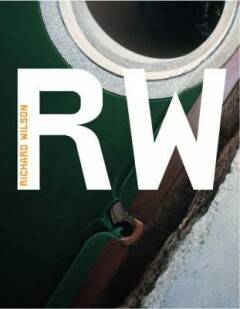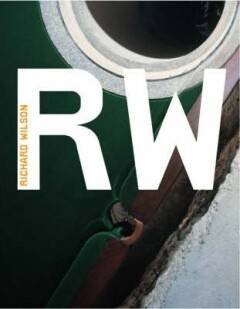
- Afhalen na 1 uur in een winkel met voorraad
- Gratis thuislevering in België vanaf € 30
- Ruim aanbod met 7 miljoen producten
- Afhalen na 1 uur in een winkel met voorraad
- Gratis thuislevering in België vanaf € 30
- Ruim aanbod met 7 miljoen producten
Zoeken
€ 38,45
+ 76 punten
Omschrijving
Richard Wilson was born in London in 1953. Descended on one side from a line of builders and on the other of artists, his work often comes closer to engineering or even architecture than it does to traditional sculpture. Typically he transforms the viewer's environment into something unsettling and strange by the interventions he makes, whether in the internal space of a gallery, the structure of a building or in one of the ships with which he has a particular affinity. Perhaps his best-known work is 20:50, currently on show at, and probably the most popular exhibit in, the Saatchi Gallery in London. For 20:50, Wilson flooded a gallery space with oil, which has a highly reflective surface. Into the oil is built a kind of narrow pier or promenade down which one person at a time can walk, the oil perilously close to their body. So reflective is the oil that the room induces a strong sense of disorientation. Further along the River Thames, next to the Millennium Dome, is another Wilson piece that provides an unexpected sight. moving freely through it, is both a startling sculptural object in its own right and a comment on the vanished shipping industry that was once a mainstay of the river community. In Los Angeles, Wilson was inspired by one of the most ubiquitous symbols of Californian life, the swimming pool, suspending a fibreglass pool shell from a sixty foot-long pipe in MOCA's subterranean gallery (Deep End). In addition to and often in conjunction with these large-scale projects, Wilson makes films and sculpture, takes photographs and stages performance events and has been a formative influence on a generation of British artists. This lavishly illustrated career survey includes a new interview with Wilson and examines six key works in depth.
Specificaties
Betrokkenen
- Auteur(s):
- Uitgeverij:
Inhoud
- Aantal bladzijden:
- 128
- Taal:
- Engels
- Reeks:
Eigenschappen
- Productcode (EAN):
- 9781854375704
- Verschijningsdatum:
- 24/01/2006
- Uitvoering:
- Paperback
- Formaat:
- Trade paperback (VS)
- Afmetingen:
- 211 mm x 268 mm
- Gewicht:
- 517 g

Alleen bij Standaard Boekhandel
+ 76 punten op je klantenkaart van Standaard Boekhandel
Beoordelingen
We publiceren alleen reviews die voldoen aan de voorwaarden voor reviews. Bekijk onze voorwaarden voor reviews.








